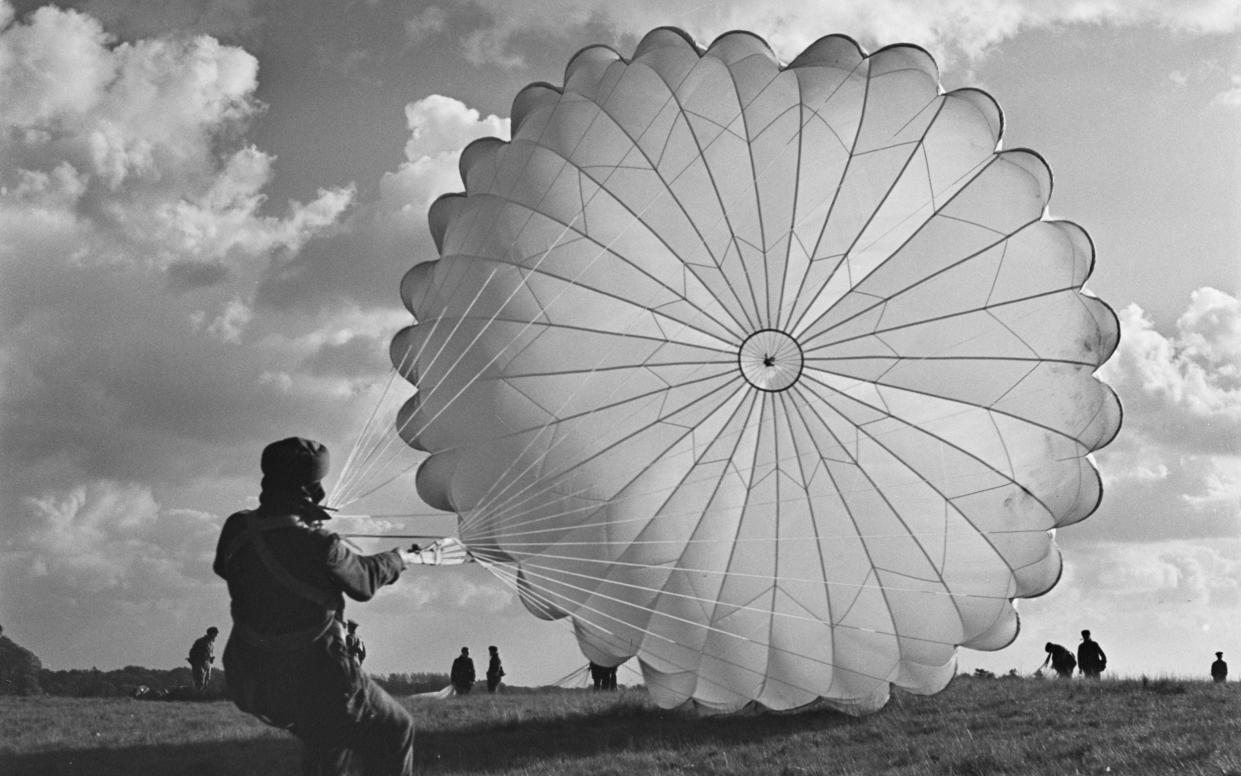The Red Devils: how Britain’s daring paratroopers were let down by inept leaders

At 9.52am on Saturday March 24 1945, Brigadier James Hill found himself floating down onto a clearing in the heavily wooded area of Hamminkeln, on the eastern side of the River Rhine. Hill was one of 2,200 paratroopers in his Third Brigade and among 14,000 airborne troops being landed that day. In all, the immense sky armada included 540 Dakota transport planes and 1,300 gliders – a huge demonstration of force. For Hill, who had been an early recruit in Britain’s airborne forces, Operation Varsity, as it was known, was a world away in terms of skill, technique and planning from the first primitive drop into battle he’d undertaken back in North Africa two-and-a-half years earlier.
It was also spectacularly successful, because this time the airborne troops were landed on time, in the right place, and were able to fulfil their mission of destroying most of the enemy’s artillery so that it could not impede the main attack across the river. Some 4,000 German troops were captured, 1,000 killed and wounded and more than 90 guns taken. As Brigadier Hill later commented, Varsity had taken “advantage of lessons learned from the four previous operations”. As Saul David notes at the end of this fascinating and absorbing book, “Britain’s airborne force had left the best until last, and in 1945 had reached its zenith.”
Despite this, the Sixth Airborne Division that took part in the Rhine operation lost 1,344 troops – killed, wounded and missing – which amounted to 27 per cent. This rather underlined just how dangerous it was to be part of the Red Devils, as the British airborne forces became known, and as David charts their long, often deeply flawed and tragic journey through the war, the casualties were many and often needlessly squandered too.
Created as an intended force of 5,000, they were formed at Churchill’s urging in the summer of 1940 along with the Commandos and Special Operations Executive. The Prime Minister, like many others, had been rather dazzled by the dash and flair of the German airborne forces in the Blitzkrieg assaults, but, as with others, was guilty of seeing only the advantages rather than the many constraints and difficulties of mounting operations from the sky. All paratroopers were volunteers, while glider troops were transferred from ground operations but had the choice not to take up the extra pay and transfer if they chose. It meant that all those who wore the maroon beret knew they were part of something special and were, for the most part, eager to prove their mettle.
Unfortunately, what is also clear from Sky Warriors, Saul David’s history of Britain’s wartime airborne forces, is that very often these highly motivated men were badly let down at the higher level of command. Hubris and arrogance often clouded judgement. General George “Hoppy” Hopkinson, for example, was so messianic about glider-borne troops that he insisted they play a key part in the invasion of Sicily, even though the glider pilots leading the troops into battle were doing so at night with woefully insufficient training and mostly in American gliders with which they were unfamiliar. Half of the 137 sent landed in the sea, while others came down miles from where they were supposed to.
Incredibly, the Ponte Grande Bridge south of Syracuse, their target, was still taken intact, initially captured by the men of the only glider to successfully reach the target. The subsequent paratrooper drop at Primosole Bridge a few days later was also a fiasco. On D-Day, the men of Sixth Airborne were also dropped at night and widely scattered, while at Arnhem, a few months later, the daylight drop was finally a success but the planning and generalship was poor. On every occasion, the men battled heroically and often achieved far more than could have been expected given the mayhem and handicaps around them.
No specific British aircraft was ever developed for airborne operations. The arm grew very swiftly, and although lessons were learned they were very often not the right ones. Incredibly, and unlike their US counterparts, British paratroopers were dropped with only one parachute, not two, because of the need to economise. Legends have grown up around the Red Devils and as David points out, they regarded themselves as elite troops, yet what also emerges from this compelling tale of organic evolution and frequent recklessness is the indomitable and pioneering spirit of the men involved and how often their courage and daring was badly squandered by those further up the chain.
It is very much the men’s characters that form the beating heart of the book – eccentrics, mavericks, ridiculously brave but also very human too. “My darling boy,” wrote one mother to her paratrooper son, Captain Alan Clements, “we heard on the wireless last night that you are in action. You can guess our thoughts are with you every moment of the day.” Moments such as this remind the reader that for all the mythologising, the Red Devils were mostly young men, as vulnerable as any other soldier. Yet what they achieved, as David makes clear in this hugely entertaining book, was remarkable.
Sky Warriors is published by William Collins at £25. To order your copy for £19.99, call 0808 196 6794 or visit Telegraph Books

 Yahoo News
Yahoo News 
